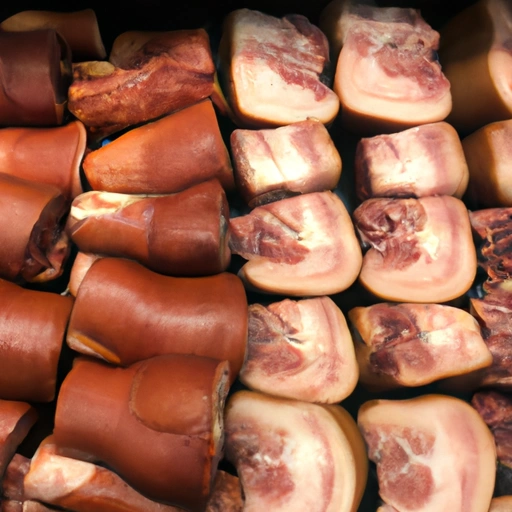Pork Shoulder
Description

Pork shoulder, also known as pork butt or Boston butt, is a cut of meat from the upper part of the pig's foreleg. It is a well-marbled, fatty cut that is prized for its rich flavor and tender texture when cooked slowly. This cut is incredibly versatile and can be used in a wide variety of dishes, making it popular in cuisines around the world.
Common uses
Pork shoulder is commonly used in slow-cooked dishes such as stews, braises, and roasts. It is an ideal cut for smoking, as the high-fat content keeps the meat moist during the long cooking process. It can also be cut into steaks or chunks for grilling or sautéing, although these methods are less common.
Nutritional value
Calories
A 4-ounce (around 113 grams) serving of cooked pork shoulder typically contains approximately 210 calories.
Protein
This same serving size offers about 20 grams of protein, making it a good source of this essential nutrient.
Fat
The fat content can be quite high, with around 14 grams per serving, though this can vary depending on the specific cut and cooking method.
Carbohydrates
Pork shoulder is naturally low in carbohydrates, with less than 1 gram per serving.
Vitamins
It is a good source of B vitamins, particularly vitamin B6 and niacin (vitamin B3), which are important for energy metabolism.
Minerals
Pork shoulder also provides minerals like phosphorus, zinc, and selenium.
Health benefits
Despite its fat content, pork shoulder can be part of a balanced diet due to its high protein and vitamin B content. Protein is crucial for muscle maintenance and repair, while B vitamins are essential for converting food into energy and maintaining healthy skin and brain function.
Potential risks
The high saturated fat and cholesterol content in pork shoulder can pose health risks if consumed in large quantities, particularly for individuals with heart disease or high cholesterol. It is recommended to enjoy pork shoulder in moderation and balance it with leaner sources of protein and a variety of vegetables.
Common recipes
Pork shoulder is the star in many recipes, including pulled pork, stews, and slow-roasted pork dishes. It's also used in the preparation of sausages and ground pork mixes.
Cooking methods
Popular cooking methods for pork shoulder include slow-roasting, braising, smoking, and slow-cooking in a crockpot or Dutch oven. These techniques help break down the tough muscle fibers and connective tissue, resulting in succulent, tender meat.
Pairing with other ingredients
Pork shoulder pairs well with a variety of flavors, from sweet and tangy barbecue sauce to savory herbs and spices like rosemary, thyme, and garlic. It also complements sides such as coleslaw, cornbread, beans, and roasted vegetables.
Summary
Pork shoulder is a flavorful and rich cut that is perfect for slow-cooking methods. It offers nutritional benefits such as protein and essential vitamins, but should be consumed in moderation due to its fat content. Its versatility in recipes and cooking methods makes it a beloved ingredient worldwide, with each cuisine adding its unique twist to this delicious cut of pork.